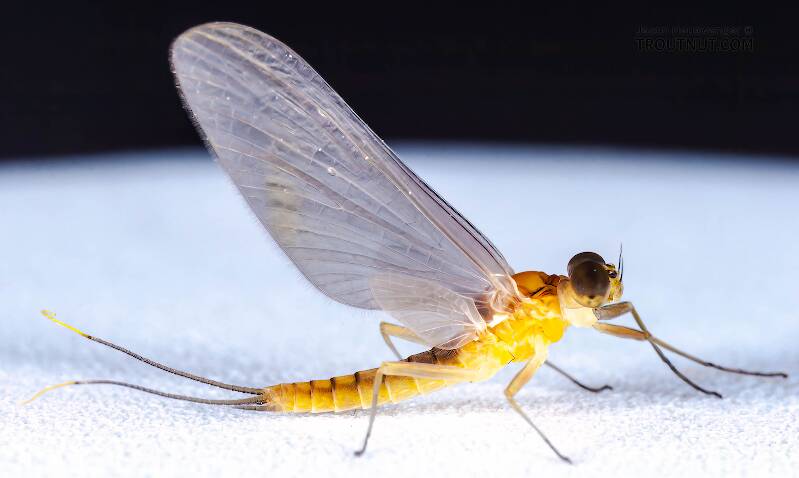
Blue-winged Olives
Baetis
Tiny Baetis mayflies are perhaps the most commonly encountered and imitated by anglers on all American trout streams due to their great abundance, widespread distribution, and trout-friendly emergence habits.


Mayfly Species Afghanurus inconspicua
Taxonomic History
Species Range
Physical description
Most physical descriptions on Troutnut are direct or slightly edited quotes from the original scientific sources describing or updating the species, although there may be errors in copying them to this website. Such descriptions aren't always definitive, because species often turn out to be more variable than the original describers observed. In some cases, only a single specimen was described! However, they are useful starting points.
Male Spinner
Wing length: 5.5 mm
Mesonotum olive brown; abdominal tergites 2-7 pale yellow, with a median broad reddish brown band; genitalia of the lucidipennis (now a synonym of Nixe lucidipennis) type (see fig. 97).
Head light yellow; orange-brown shading on face next to eyes. Thoracic notum pale to dark olive brown; pleura light yellow. Legs pale yellow. Fore femora and tibiae smoky brown apically; basal tarsal joint about 1/3 of the second. Basal joint of hind tarsus longer than the second. Wings hyaline, venation pale; basal costal cross veins almost invisible. Abdominal segments pale yellow; 2-7 semi-hyaline, 7-10 opaque. A broad median band of light or ruddy brown, variable in intensity on different individuals, on tergites 2-7, the posterior margin of each tergite opaque, so that the abdomen appears annulate. Forceps and penes pale ochreous. Penes with a wide apical and a narrow lateral lobe, a single pair of large median spines, but none laterally or apically. Tails whitish, the basal joinings ruddy brown.
This species is apparently allied to H. lucidipennis (now a synonym of Nixe lucidipennis), but it is considerably smaller. The abdomen would seem to be paler than in H. rusticalis (now a synonym of Nixe rusticalis), and it lacks the pale markings present in the dark dorsal areas of that species.
Specimens of the Mayfly Species Afghanurus inconspicua
1 Male Dun

I could not identify it by following a species key step by step, but I tentatively keyed it to the genus Nixe, and based on distribution maps and physical descriptions the most likely species is Nixe inconspicua. (Edit in 2023: this species was recently moved from Nixe into Afghanurus.)
Start a Discussion of Afghanurus inconspicua
References
- Baumann, Richard W. 1975. Revision of the Stonefly Family Nemouridae (plecoptera) : a Study Of The World Fauna At The Generic Level. Smithsonian Contributions to Zoology undef(211): 1-74.
- Needham, James G., Jay R. Traver, and Yin-Chi Hsu. 1935. The Biology of Mayflies. Comstock Publishing Company, Inc.
Mayfly Species Afghanurus inconspicua
Species Range
Resources
- NatureServe
- Integrated Taxonomic Information System
- Global Biodiversity Information Facility
- Described by McDunnough (1924)

